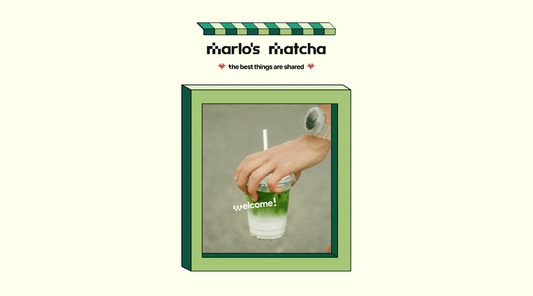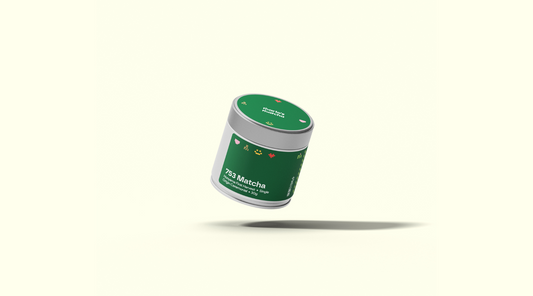
Color Theory in Branding—Designer’s Guide
Color makes or breaks a brand.
Yet most designers still pick colors based on personal preference or trending palettes. They miss the strategic power of color psychology.
Once you understand color theory, you stop choosing colors and start crafting experiences. You move from decoration to communication. You build brands that stick in memory and drive action.
Command+i gets this. Their nature-based color palettes tap into the combinations humans instinctively trust. When you ground your color choices in natural harmony, you create brands that feel right before people even know why.
This guide shows you how to harness that power, speak the language of color fluently and turn pretty palettes into strategic tools that serve real business goals.
The Psychology of Color in Branding
Johann Wolfgang von Goethe pioneered our understanding of how color affects emotion. His work revealed what designers now know instinctively. Colors trigger subconscious responses that shape consumer behavior.
Think about walking into a luxury spa versus a fast food restaurant. The muted grays and soft blues instantly signal relaxation. The bright reds and yellows communicate energy and speed. Your brain processes these signals in milliseconds.
This scientific understanding transforms how we work with color. Instead of choosing based on aesthetics alone, we can select colors that trigger specific emotional responses. Command+i has a brilliant Instagram post explaining 44 colors and their emotional descriptors.
For example, instead of picking #EA1949, you choose passionate "Scarlet Red" that feels energetic and dynamic. This shift helps you connect color choices to brand voice.
This emotional vocabulary transforms client conversations too. Instead of debating whether navy or royal blue works better, you discuss whether the brand needs trustworthy professionalism or bold confidence.
Once you understand the emotional weight of individual colors, the next step is combining them into systems that work across every brand touchpoint.
How To Build Effective Color Systems
A well-designed color system does more than look good—it builds instant recognition. Think Tiffany blue or Coca-Cola red. You know these brands instantly through color alone.
The key is creating hierarchy and clear rules that maintain consistency while allowing creative flexibility.
Defining Your Color Hierarchy
Your primary color carries your brand personality. This appears most frequently across touchpoints. Nike's orange. Spotify's green. McDonald's yellow. Choose one that connects with your audience's expectations.
Secondary colors expand your palette without diluting recognition. Limit yourself to two or three complementary options. These handle supporting roles like section dividers or secondary buttons.
Accent colors create action. Use one bright option for CTAs, alerts, or key information. Multiple accent colors compete for attention and weaken impact.
Creating Practical Guidelines
Strong color systems rely on clear documentation that prevents misuse while empowering creativity.
Define which colors work for text versus backgrounds. Set minimum contrast ratios for accessibility. Specify overlay opacity for images.
Remember that colors behave differently across media. Different formats serve different purposes. Hex codes (#FF6B35) for web development. RGB (255, 107, 53) for screen design. CMYK (0, 58, 79, 0) for print production.
Test everything. Use tools like WebAIM's Contrast Checker to verify readability. What looks good on your calibrated monitor might fail on other screens.
Assign colors to specific functions. Primary blue for headlines. Accent orange for buttons. Neutral gray for body text. Document these assignments to maintain consistency across every touchpoint.
When you combine emotional understanding, strategic hierarchy, and practical guidelines, you create color systems that tell compelling brand stories. Let's look at how this works in practice.
Example—Marlo's Chocolate
Marlo's Chocolate shows how emotional color choices create memorable brands. This brand we created for our Brand Identity Guidelines 2.0 Template uses Command+i's Marchmont palette to capture the warmth of a neighborhood chocolate shop.
The palette draws from Marchmont's whisky-hued sandstone and ruby red architecture. This Edinburgh neighborhood's chocolate-box charm inspired a color story that feels both regal and approachable.
Chocolate brown (#473124) anchors the brand as the primary color alongside rose (#C74261) and mango (#F4CE5D). The brown grounds the brand in its core product. The rose adds unexpected sophistication. The mango brings warmth and energy that makes the brand feel welcoming.
The additional palette expands the brand's visual vocabulary. Whisky (#EDE2C4) and coconut (#FFFBEF) provide neutral backgrounds. Peach (#FF8B9D) and papaya (#F17852) add playful touches for seasonal campaigns. Ruby (#A62928) deepens the red tones for premium product lines. Latte (#BA9780) bridges the warm and cool tones.
This nine-color system gives designers flexibility while maintaining brand consistency. Product packaging might combine chocolate brown with whiskey backgrounds and rose accents. Social media could play with mango and peach for summer promotions.
By starting with a location's natural palette, Marlo's Chocolate built a color system that tells a story. Each shade contributes to the feeling of warmth, nostalgia, and quality that defines the brand.
Conclusion
Color transforms brands from forgettable to unforgettable.
By moving beyond hex codes to emotional descriptors, understanding color hierarchy, and building systematic guidelines, you create visual languages that connect with audiences on a deeper level.
The best color systems draw inspiration from nature and apply those harmonies strategically across every brand touchpoint.
Transform your next project with nature-inspired palettes from Command+i, where landscape photography meets strategic color design to help you create brands that truly resonate.



